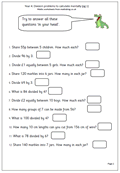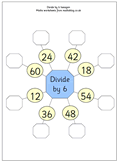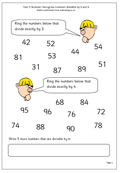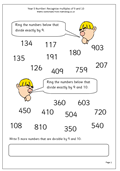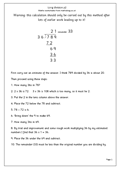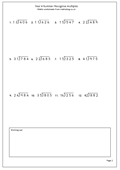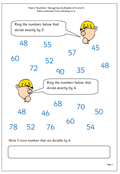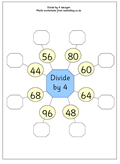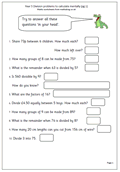 By year 5 solving division problems ‘in your head’ get quite tricky and a very good understanding of the relationship between multiplication and division is needed. Questions involving sharing with remainders need to be solved which need both working out ‘tables’ and calculating the number left over.
By year 5 solving division problems ‘in your head’ get quite tricky and a very good understanding of the relationship between multiplication and division is needed. Questions involving sharing with remainders need to be solved which need both working out ‘tables’ and calculating the number left over.
It is always a good idea to ask children how they reached their answers as this can reveal a great deal about their mathematical thinking as well as their knowledge of ‘times tables’.
Here we have a page of division problems, all of which should be answered mentally, although ‘jottings’ may help.
